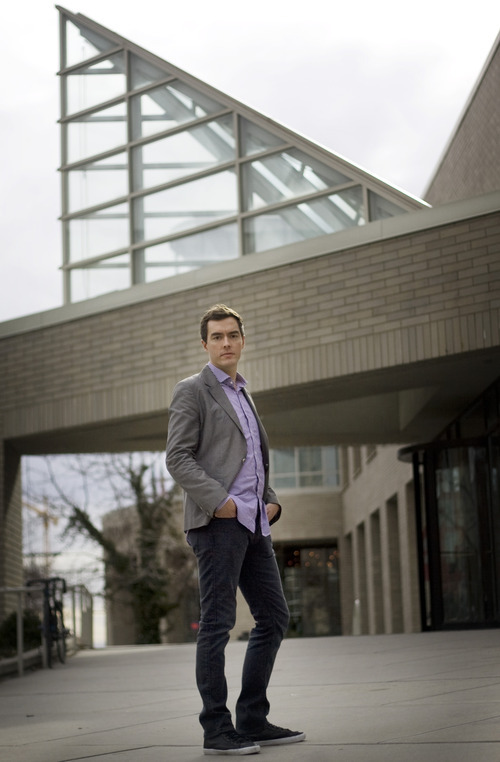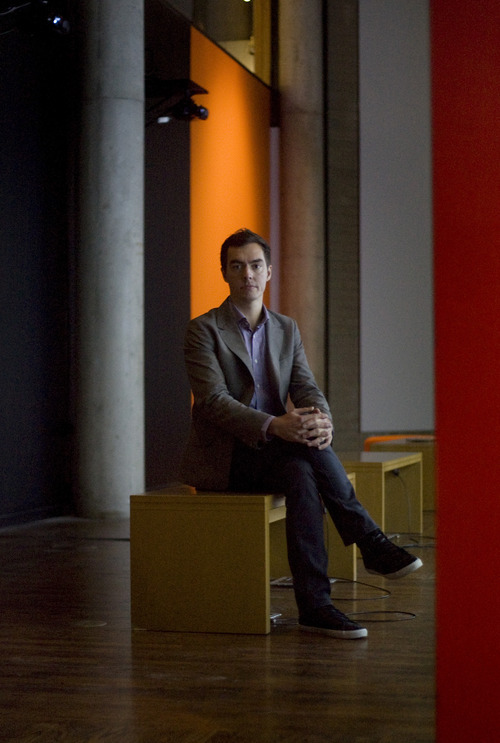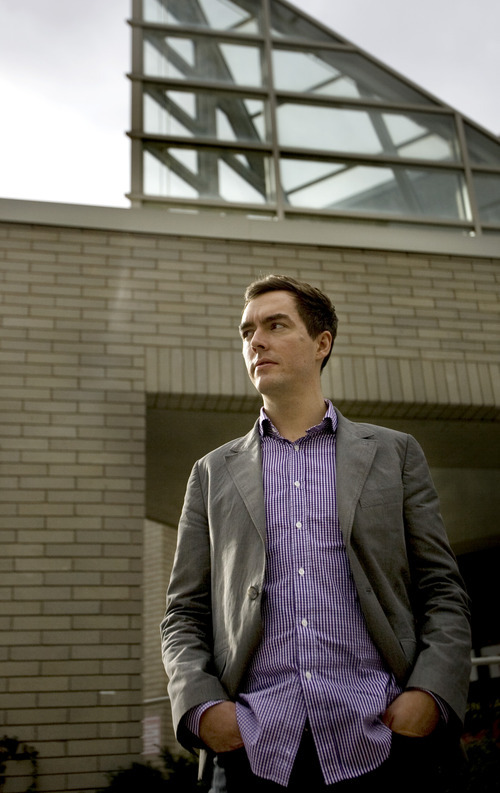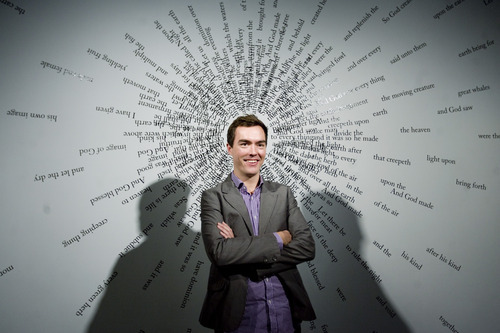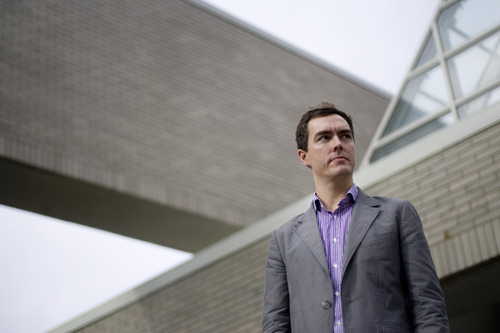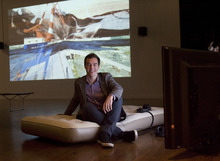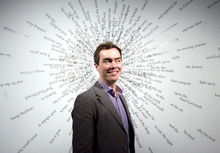This is an archived article that was published on sltrib.com in 2012, and information in the article may be outdated. It is provided only for personal research purposes and may not be reprinted.
In Salt Lake City for less than a month, Aaron Moulton, the Utah Museum of Contemporary Art's new senior curator, is trying to adapt to yet another artistic culture.
Over the past 10 years, Moulton, an Illinois native, has lived in London, where he got a master's in curatorial studies at the Royal College of Art; in Milan, where he worked as an art journalist at Flash Art International; and in Berlin, where he was director at Feinkost, an exhibition space along what was once the Berlin Wall.
London, Milan, Berlin — Salt Lake City? The obvious question to anyone in Utah who follows contemporary art is: What did Moulton do in Berlin to get thrown out of Europe?
"I moved mostly for jobs," he explains. "I'm more of an art-world anthropologist. I like to put myself in different art-world cultures and figure out where I fit."
—
Evolving art scene • Moulton and his wife, Mette Ravnkilde Nielsen, also an art curator and event planner, arrive in Utah at a time of swirling change in its art culture.
Attention to contemporary art has been on an upward swing in the past few years with an increased emphasis on modern forms at the Utah Museum of Fine Art, Central Utah Art Center in Ephraim and Brigham Young University's Museum of Art.
Moulton replaces Micol Hebron, a performance and video artist and art educator, who returned to Los Angeles after a little more than a year as UMOCA's senior curator. (Hebron will continue to be involved in some UMOCA exhibits.) And the UMFA also recently lost its contemporary art curator, Jill Dawsey, to San Diego's Museum of Contemporary Art. She has yet to be replaced.
Moulton, 33, brings crucial skills to the newly renamed UMOCA, formerly the Salt Lake Art Center. In Milan, he worked as a journalist to connect audiences with the larger art world. In Berlin, he worked to win and increase audiences for an exhibition space. In the process, Moulton also gained experienced in navigating the Byzantine ways of art funding.
"I've come from all these major metropolises with hyper-developed art scenes," he says. "I've come with a lot of notes and a lot of ideas — a massive reservoir of ideas."
He looks forward to operating in a smaller, perhaps less-intense, art culture that,nevertheless, offers challenges through a space like UMOCA.
"You can do a lot here," Moulton says of Utah's scene. "The potential for impact is very palpable."
—
Selling contemporary art • Adam Price, executive director of UMOCA, says Moulton is the right person at the right time for the museum, which has been steadily increasing the scope of its exhibits, its attendance and its stature.
"As we are moving increasingly in the international and national arena, I wanted a curator to continue the direction we have been moving in," Price says. "With his experience, Aaron brings a really nice skill set."
Says Moulton: "I know that I'm good at selling the idea of art. I like talking to people and bridge-building."
—
Everybody's art • Price's tenure has been noted for his work to push UMOCA beyond its walls on West Temple through accessible events, such as an artist-created miniature-golf course, a festival of edgy lawn art and a roving Art Truck. And he may have hit on a good partner in Moulton, a curator who dismisses the idea that contemporary art can be appreciated only by an educated elite.
"It's a rather unfortunate shortcoming of the art business that it assumes a preconception of its audience — that the art needs an educated audience to have the experience or understand it," Moulton says. "That's total rubbish."
One of Moulton's shows in Berlin that deeply impressed Price was "During Office Hours," which was exhibited in the cubicles of a working investment bank rather than in a gallery. The exhibit attracted art sophisticates, but also excited the people who were working in the office. "It's important to play with that dichotomy — always trying not to privilege one of those audiences over the other," Moulton said.
—
Old-school mass media • Although he will be busy working on UMOCA's more than 20 shows annually, Moulton's first large multiartist show is planned for this summer. The art "anthropologist" is playing with an idea for it that he formed in conversations with Hebron. He wants to call for works under the broad theme of the cantastoria, an ancient picture-song art form that once was the mass media in preliterate cultures in Europe and Asia.
In its simplest form, cantastoria involved a performer singing sacred stories or even political news or protest, while leading the audience through a series of illustrations on a large poster — the direct ancestor of the comic strip.
Moulton says he wants the exhibition to explore that idea across cultures and with works that communicate through language, song or lyricism.
Moulton also brings an infusion of brazen idealism to UMOCA. "What you are selling in this place is the integrity of our culture — if one can be so bold," he says. "Let's be idealistic — why not? What contemporary art is at the end of the day is the most avant-garde way of imagining where we are at. And it's a scary thing sometimes. People often don't agree with it."
features@sltrib.com; facebook.com/nowsaltlake —
What's next for the Utah Museum of Contemporary Art?
You can meet and discuss the directon of UMOCA with Senior Curator Aaron Moulton at an Art Talk tonight at 7 p.m.
Information • http://www.utahmoca.org.


